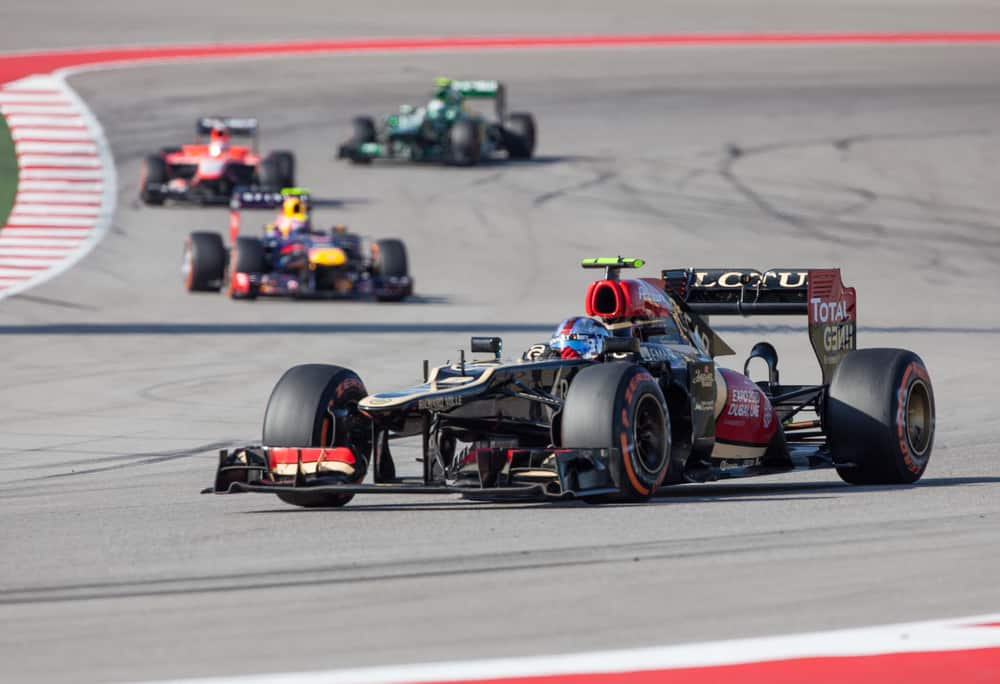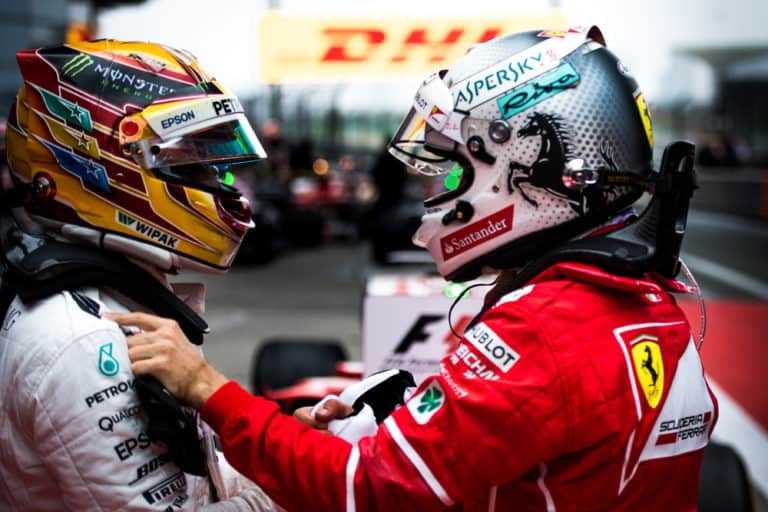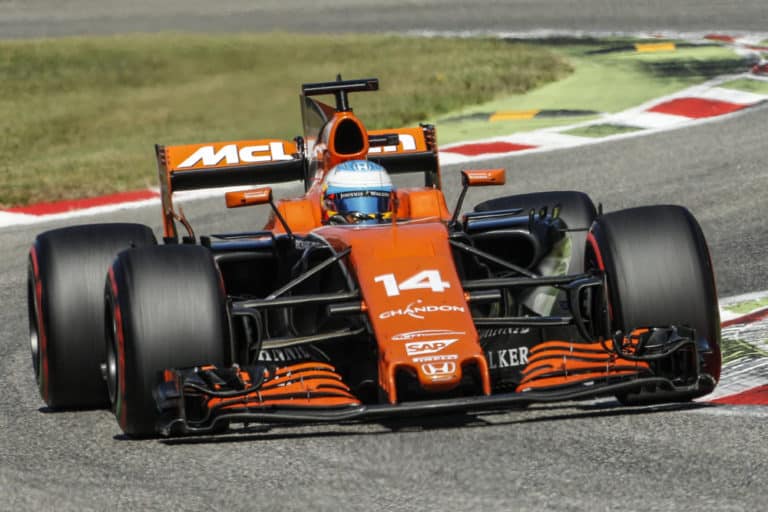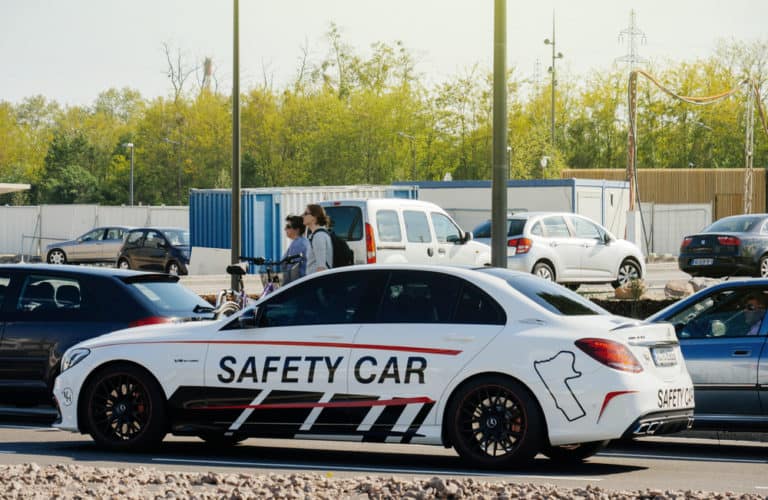Image editorial credit: Ev. Safronov / Shutterstock.com
Have you ever seen F1 tires in blankets before the race and drivers zigzagging around the track behind the safety car and wondered why this is done? This is because the tires need to be heated for maximum efficiency, and in this article, we will explore why Formula 1 tires are heated.
Formula 1 tires are heated because warm rubber performs better and sticks to the track more than cold rubber. F1 tires are designed to perform at around 212F / 100C, and therefore, the tires need to be heated to this temperature to be effective on the track.
In this article, we will explore why Formula 1 tires are heated before and during a race. We’ll look at how this is done and which methods are more efficient and more common. So, let’s hop in the cockpit and get driving before our tires become too cold and our efficiency drops off.
Do Warm Tires Grip Better?
Warm tires grip much better than cold tires do. However, if the tires become too hot, they start to degrade and blister too quickly, which is not ideal for an F1 race as going in got a pit stop can cost drivers around 30 seconds. Therefore, the tires cannot be too hot, but they can’t too cold either; otherwise, they will not grip properly. This can sometimes be an issue on high-speed, hot tracks as the tires can degrade quicker than usual.
The tires are also designed to work better at warmer temperatures because they naturally heat up during a race. By the end of the drive, the tires will be warmer on a standard road car than when they started because of the friction caused by the drive. With F1, the tires obviously become hotter because the cars average around 124 m/h (200 km/h) and can reach speeds of 223 m/h (360 km/h).
Warmer tires become softer due to the heat, making them ‘stick’ to the track better than if they were cold. Therefore, it is crucial to get them up to the right temperature to operate with maximum efficiency.
How are Formula 1 Tires Heated?
Tires are heated to about 80C (176F) in the garage by the team mechanics, and then they are further heated by the drivers on the track to their optimal temperature of 100C (212F). Formula 1 teams heat the tires of a car in three ways. These are:
- Tire warmers.
- Tire blankets.
- Zigzagging on track.
Tire Warmers:
Tire warmers are heaters that are attached to the tire blankets to warm up the tires. They have heating elements that heat the specialized tire blankets. A technician can control them via a control panel which allows the temperature to be set at a specific temperature.
The benefit of tire warmers is that they keep the tires constant and do not require continuous supervision and effort from the technicians. However, due to the importance of warm tires, team members will often check on them to ensure that the system is working correctly.
Tire Blankets:
Tire blankets are used in conjunction with tire warmers. Tire warmers can only be used in the garage when tires are off the car. Therefore, as soon as the tires go onto the car and the car exits the garage, the tires’ temperature drops. Thus, the tire blankets are used to keep the tires at the same temperature once they have been removed from the tire warmer.
These are used until the very last second on the track. Before the car leaves the garage for the qualifying or practice session, these will be on the tires. They will also be on the tires while the cars are waiting for the race to start so the drivers can begin the formation lap.
These are specialised blankets that are designed to heat up the tire to the desired temperature and keep it there. They are easy to put on and remove and can be used when the tire is on and off the car. However, when the tire is on the car, they only cover part of it, due to the part being in contact with the racing track.
Tire blankets were originally going to be banned for the 2021 season as F1 tire manufacturer Pirelli introduced new 18-inch (46cm) tires for the season. However, as Pirelli felt like they would help aid the transition to new tires and make the process easier, the decision was reversed.
However, the ban may still come into effect in the next few years once the 18-inch tires are adequately dealt with by the teams.

Zigzagging On Track:
You may have seen drivers zigzagging on the racing track and rapid accelerations and decelerations during the formation lap and when they are behind the safety car. This is done to ensure that the tires are heated to the optimal temperature to ensure that racing is easier.
It is essential to do it at these times, as a warmer tire can give the car more grip, ensuring a faster start for the driver. This is extremely important at the beginning of the race and for a safety car restart once the safety car has exited the track. The margin between cars is so slim at these points that drivers need to get away as quickly as possible, and having warm tires is integral for this process.
Regular racing at high speeds keeps the tires warm due to the extreme friction between the tires and the track at these speeds. However, when the car is going slowly, the drivers need to heat their tires in other ways, so they zigzag their car.
That is why you will often hear drivers complain to their race engineers via the team radio when the safety car restart is taking a long time to start. This is because the longer a car is going at the slow speed behind the safety car, the colder the tires become, affecting the car’s performance.
However, this method isn’t very beneficial, but it is better than the alternative of not doing it all, so drivers choose to do it.
When Are Formula 1 Tires Heated?
The tires used on Formula 1 cars are heated at virtually every possible moment they can be heated. They are initially wrapped in tire blankets and heated by tire warmers in the garage before they go onto the car. Once they are on the car, the tire blankets are held over the tire by team mechanics. These only come off when the car has to exit the garage or begin its formation lap.
Tires are also heated by natural racing, so they do not have built-in tire heaters on the car. These would also add extra weight to the car and would only really be in use when the car is waiting for the race to start or a safety car on the track.
Conclusion
Formula 1 tires are heated because a warm tire = more grip = a more efficient and faster performance. Warm tires stick to the track better than cold tires, which is why the tires are heated. Better grip means the cars can go around corners faster and face less of a risk of sliding off the track.
That is why you will see cars sliding off the track on cold mornings because the tires are not gripping to the surface properly, and at high speeds, this can lead to the driver losing control.
All in all, F1 tires are heated because warm tires produce better performances.






